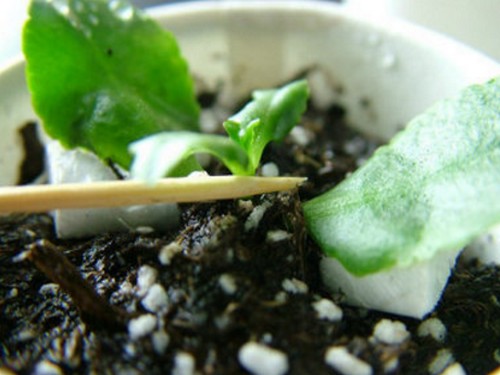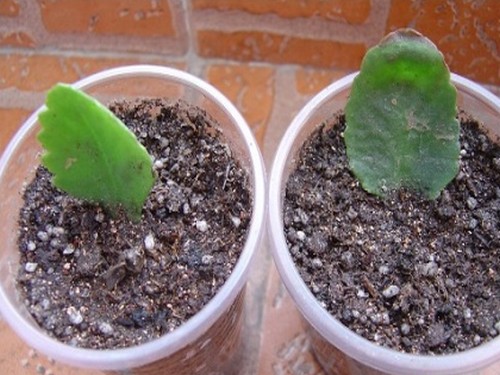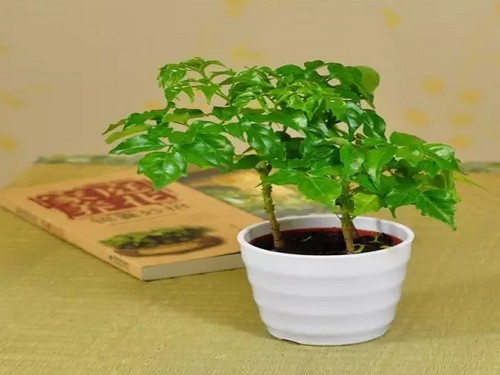Cuttage seedling raising technique of longevity flower
Family breeding longevity flowers are mainly cuttings. Due to the different seasonal temperature, the speed of rooting varies; cuttings, cuttings, and leaf cuttings have a high survival rate due to different parts of the cuttings.
Longevity flowers can be cut throughout the year. Cutting is the best when the air temperature is 20-25 ℃ and the air is moist. Easy to take root, easy to survive, more than 10 days to 20 days to form roots, more than 30 days can be transplanted. It is easy to rot roots and stems in high temperature and muggy heat in summer, so astigmatism should be avoided after planting, and keep moist and ventilated. If the sunshine or supplementary light is strengthened after planting in winter, the rooting speed is slow when the temperature is lower than 15 ℃. When the temperature is less than 10 ℃, the growth is stagnant and it is not suitable for cutting.

The whole plant of longevity flower can be cut. From top to bottom, it is more and more difficult to root, the new branches and ears of the year take root the fastest and are easy to live, the branch segments take the second place, and the lower Lignified stems are difficult to root and the most difficult to insert.
Cutting of bud ears: it is best to use a sharp knife to cut off the new bud ears of the year 6-8cm, leaving 4-5 pairs of leaves. After the wound is dry, insert the prepared matrix 1cm around, which is too deep and easy to rot the stem. Water once after cutting and keep the substrate moist every day. Make up the light after cutting in winter. The rooting rate varies from fast to slow according to different varieties.
The quality of cuttings is related to the future image: in order to ensure the good character of longevity flower plants, plants with strong plants, beautiful plant shapes, no diseases and insect pests, green and thick leaves and bright flowers should be selected as the breeding mother plants. in preparation for raising more high-quality longevity flowers in the coming year.
Leaf cutting: the leaves of longevity flowers can also be cut, but sprouting is very slow, usually about half a year. When inserting, you should choose larger and thicker leaves and cut them off from the root as fast as possible. Put the whole leaf in a cool place and let the wound dry for a few hours, then insert the petiole into the moist substrate. When the petiole is too short, a small number of leaves can be inserted obliquely or directly into the matrix instead of the short stalk. Keep the substrate moist, too wet can easily lead to leaf disease and rot, and put it in a slightly weaker sunlight after cutting.
My cuttage is in the spring every year after the flower fade, combined with turning the basin, shaping and centralizing a cutting cutting. In the daily management, the branches are cut off at any time according to the need of plastic surgery. The nutrient soil used for cutting propagation of longevity flower is peat, perlite and vermiculite as substrate, the ratio is 3:2:1. The method of preparation is to mix it evenly and cover it with plastic sheet. it can be used after fermentation for 48 hours.
Leaf cutting: pick the whole leaf (the bigger the better), put it in a cool place to dry the wound, after a few hours, the petiole is completely inserted into the moist matrix, such as petiole is too short, you can also insert part of the leaf into the matrix to replace the short petiole, this stage is not too wet, so as to prevent the leaf from getting sick and decay, put it in a weaker place in the sun after cutting and keep the temperature between 20: 25 ℃.
The root system begins to be established after 4 weeks, when it can be put under full-day sunshine and low concentration of fertilizer can be applied. The seedlings differentiated from callus can be seen after 7 weeks and 10 weeks. When the seedlings reach 15~20cm, they can be separated from the leaves and cultured alone, while the leaves can continue to produce seedlings. Separate seedlings can be used as maternal seedlings for the production of rootless cuttings.
Terminal bud cuttage: insert the prepared rootless cuttings directly into the flowerpot with the substrate installed, keep the substrate moist, the light intensity should not be too strong, keep the temperature between 20-25 ℃, about 2-3 weeks can take root, and then enter the production period management. Terminal bud cuttings are generally used in potted flower production. (note: longevity flowers are typical long-day flowering plants, the sunshine time must be longer than 12.5 hours during cutting propagation, and replenish light when cutting propagation in winter. )
Longevity flowers mostly use the method of asexual reproduction, in addition to cutting, but also use tissue culture to propagate.
Cutting can be divided into two cutting methods:
Leaf cuttings and shoot cuttings. Generally, leaf cutting and tissue culture are mostly used for the production of female parent seedlings, and apical branch cuttings are mostly used for potted flower production. In potted flower production, rootless cuttings are usually cut directly in the flowerpot where they will eventually be planted, so the cultivation medium and cutting substrate are the same, with the mixture of peat and perlite at the ratio of 7 ∶ 3, and the pH of the substrate is adjusted to 5.5 to 6.0. Producers can adjust the proportion according to their own water quality, production variety and production season, or add soilless substrates such as vermiculite and sand to achieve a matrix with good drainage and moderate nutrients.
Time: 2019-06-12 Click:
- Prev

Cuttage Methods and Points for Attention of Family Potted Longevity Flower
After the decoration, the family raised a pot of longevity flowers, good longevity flowers, namely dwarf kalea, perennial fleshy herbs, leaves opposite, fat and juicy, easy to break; terminal cymes, flowers orange red, yellow, red and other colors, longevity flowers plant shape short, long flowering period, lush flowers, high ornamental value
- Next

Propagation method of Happiness Tree
The main propagation methods of Happiness Tree are sowing propagation, cutting propagation and striping propagation. High-quality happiness tree seedlings are mainly propagated by seeds, usually with a hole plate of about 50 holes, sowing 1015 seeds per hole. Seeds usually do not need to be covered with anything when they germinate. But in order to ensure the humidity needed for germination
Related
- Fuxing push coffee new agricultural production and marketing class: lack of small-scale processing plants
- Jujube rice field leisure farm deep ploughing Yilan for five years to create a space for organic food and play
- Nongyu Farm-A trial of organic papaya for brave women with advanced technology
- Four points for attention in the prevention and control of diseases and insect pests of edible fungi
- How to add nutrient solution to Edible Fungi
- Is there any good way to control edible fungus mites?
- Open Inoculation Technology of Edible Fungi
- Is there any clever way to use fertilizer for edible fungus in winter?
- What agents are used to kill the pathogens of edible fungi in the mushroom shed?
- Rapid drying of Edible Fungi

